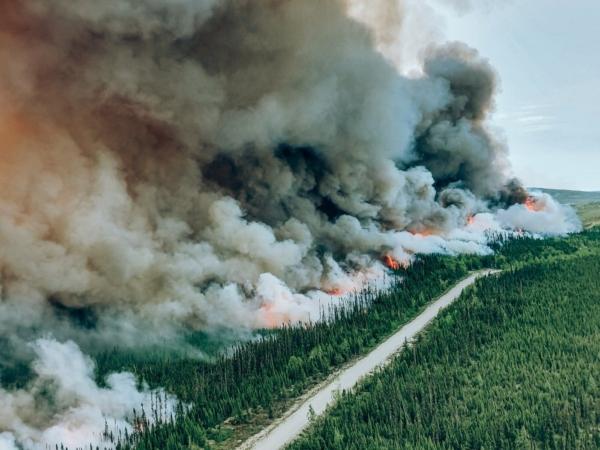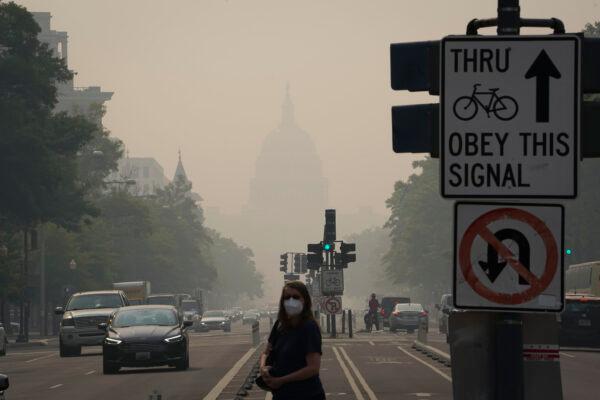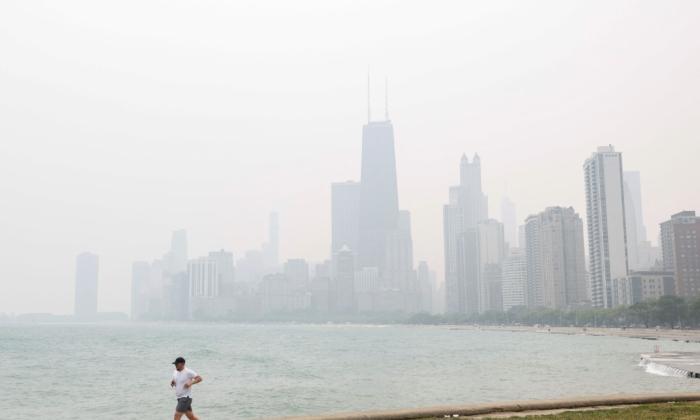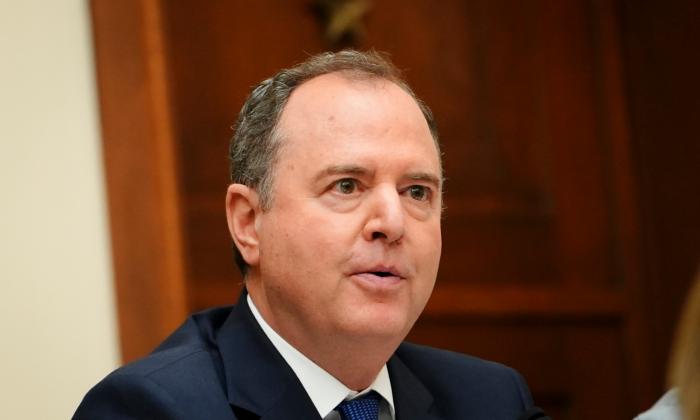Chicago recorded the worst air quality in the world on June 27, triggered by continuing Canadian wildfires, and officials are warning about the health implications posed by the concerning air quality across the U.S. Midwest.
Dr. Jordan Moskoff, the Medical Director of the Adult Emergency Services Department at Cook County Hospital warned of the health implications associated with the declining air quality.
Meanwhile, Chicago Mayor Brandon Johnson issued a statement urging Chicagoans to consider wearing masks and using air purifiers, while closing windows.

‘We’re in the Crosshairs’
“It is a function of where the fires are, where the weather systems are, and where the winds are blowing all that smoke in,” Urbaszewski said. “We’re in the crosshairs.”PM2.5 describes the mixture of microscopic solid particles and liquid droplets found in the air. As the droplets are so small, they can be inhaled, causing serious health problems. Some particles less than 10 micrometers in diameter can get deep into the lungs and potentially the bloodstream.
Particulate matter can be emitted from various sources such as construction sites, power plants, industries and automobiles, and smokestacks or fires. They are also the main driver of reduced visibility or haze in parts of the United States, according to the EPA.
Elsewhere, Zac Adelman, executive director of the Lake Michigan Air Directors Consortium noted that while it is common to see smoke in the atmosphere, it is unusual to see “high concentrations of smoke coming down to the surface like we’re experiencing it now.”
“We’ll be looking at this event for a long time to figure out, you know, what the particular dynamics and chemistry were that caused the smoke to come down to the surface here,” he told the Chicago Tribune.
Meanwhile, AirNow—which works in partnership with multiple agencies including the EPA, National Oceanic and Atmospheric Administration (NOAA), NASA, and the Centers for Disease Control (CDC), as well as tribal, state, and local air quality agencies to aggregate air quality data—placed the air quality index for Chicago even higher at 218 as of early morning Wednesday.

Canadian Wildfires Continue to Rage
AirNow is urging individuals with underlying health conditions such as heart or lung disease, as well as older adults, children, and teenagers to avoid physical activities outdoors.Other individuals should also limit outdoor activities and consider moving them indoors, according to the website.
Chicago wasn’t the only state to experience air quality concerns on Tuesday.
Meanwhile, Michigan’s Department of Environment, Great Lakes, and Energy also issued an air quality alert for the entire state.
According to AirNow, Detroit and Minneapolis joined Chicago in the top three cities to have the worst air pollution levels of any major city across the globe on Tuesday.
Air quality alerts also remain in place for all of southeast Michigan for Wednesday.
Wildfire season typically begins in Canada in May but this year, fires broke out in British Columbia and Alberta in late April following record-breaking hot and dry weather.
A total of 7.9 million hectares of land have been burned by the fires so far, according to CIFFC.





